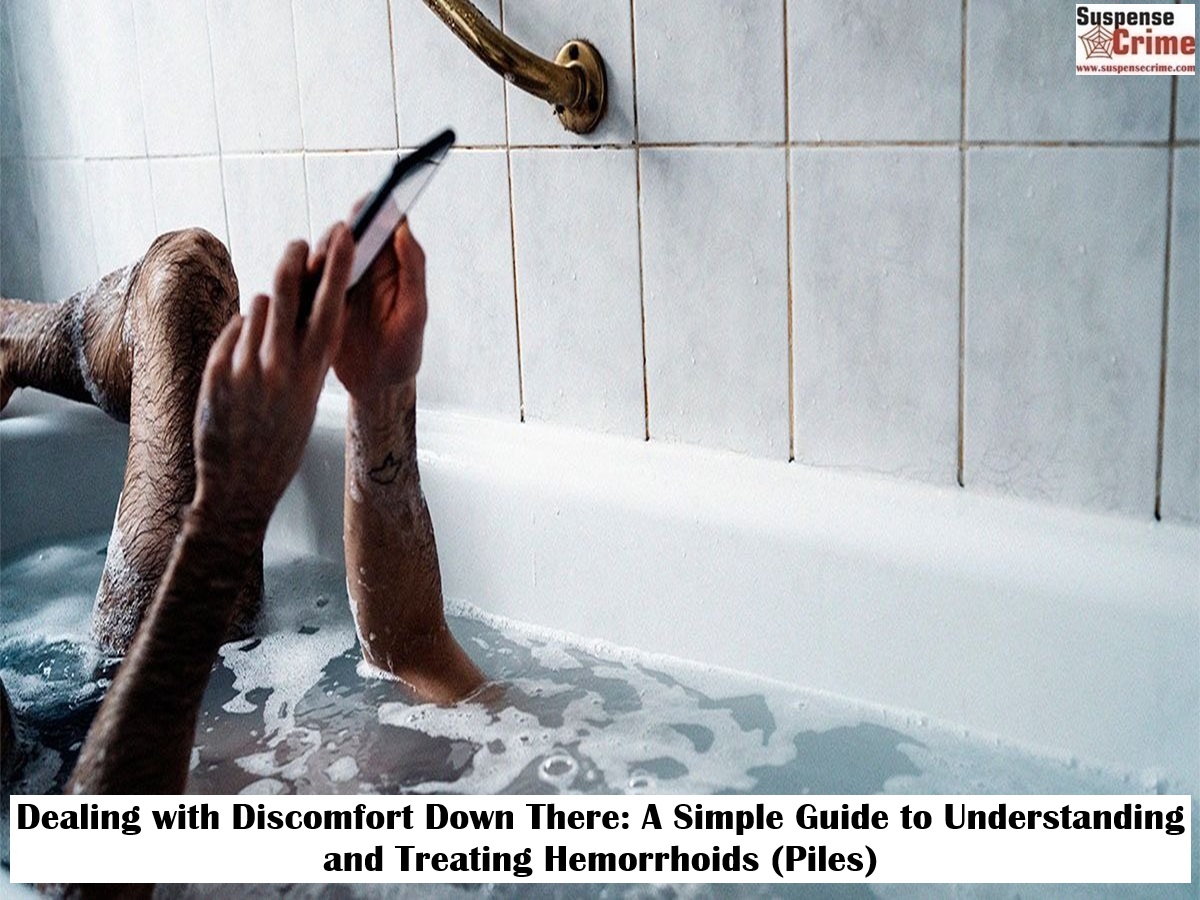
Suspense crime, Digital Desk : It’s a topic most of us would rather avoid, but it’s an incredibly common one. Hemorrhoids, more commonly known as piles, affect millions of people. While they can be uncomfortable and alarming, the good news is that they are usually not serious and can often be managed with simple lifestyle changes.
If you're experiencing discomfort, here’s a straightforward guide to what’s happening, why it happens, and how you can find relief.
What Exactly Are Piles (Hemorrhoids)?
Think of hemorrhoids as varicose veins, but in your lower rectum and anus. They are essentially swollen, inflamed veins that can develop inside the rectum (internal hemorrhoids) or under the skin around the anus (external hemorrhoids).
- Internal Hemorrhoids: These are usually painless, but they might cause bleeding during bowel movements. You might not even know you have them until you see bright red blood on the toilet paper.
- External Hemorrhoids: These are the ones that cause the most noticeable discomfort. Since they are on the outside, they can lead to itching, pain, and sometimes a hard, sensitive lump if a blood clot forms.
Common Causes: Why Do They Happen?
Hemorrhoids are primarily caused by increased pressure in the lower rectum. This pressure can come from a variety of sources, including:
- Straining on the Toilet: This is the number one cause. Pushing too hard during bowel movements, often due to constipation, puts immense stress on the veins.
- Chronic Constipation or Diarrhea: Both conditions disrupt normal bowel function and can lead to straining or frequent irritation.
- A Low-Fiber Diet: A diet lacking in fiber leads to harder stools, which in turn leads to constipation and straining.
- Pregnancy: The pressure of the growing uterus on the veins, combined with hormonal changes, makes hemorrhoids very common during pregnancy.
- Aging: As we get older, the tissues that support the veins in the rectum and anus can weaken and stretch.
- Heavy Lifting: Regularly lifting heavy objects can increase abdominal pressure.
Symptoms: What to Look For
The signs of hemorrhoids can vary but often include:
- Painless, bright red bleeding during a bowel movement.
- Itching, irritation, or swelling around the anal region.
- A sensitive or painful lump near the anus.
- General discomfort or pain, especially when sitting.
Finding Relief: Treatment and Prevention Tips
For most mild cases, you can find significant relief right at home. The focus is on softening your stool and reducing pressure.
- Embrace a High-Fiber Diet: This is the most effective long-term solution. Eat more fruits, vegetables, whole grains, and beans. Fiber adds bulk and softness to your stool, making it easier to pass.
- Stay Hydrated: Drink plenty of water throughout the day. This works with fiber to keep your digestive system moving smoothly.
- Don’t Strain or Delay: When you feel the urge to go, go. Don't hold it in. On the toilet, relax and avoid pushing forcefully or sitting for too long (put away your phone!).
- Try a Warm Bath (Sitz Bath): Soaking the anal area in plain warm water for 10-15 minutes a few times a day can work wonders for reducing irritation and swelling.
- Get Moving: Regular physical activity, like a daily walk, helps prevent constipation and improves circulation.
When to See a Doctor
While home care is often sufficient, you should consult a doctor if you have significant bleeding, if the pain is severe, or if your symptoms don't improve after a week of self-care. A doctor can confirm the diagnosis and rule out other conditions. For persistent hemorrhoids, they might suggest minimally invasive procedures or other treatments.
Read More: One Simple Ten Minute Daily Habit Can Cut Heart Attack Risk by Half

 Share
Share



